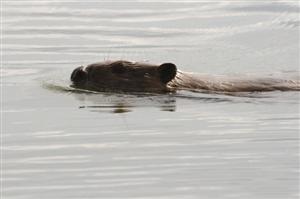Potential Effects From Hunting and Trapping on Aquatic Ecosystems
Potential impacts of hunting and trapping on aquatic ecosystems include the following:
Changes in populations of targeted species. Without compliance with effective regulations, hunting and trapping can lead to population declines and can also affect entire ecosystems through changes in predator-prey interactions. However, hunters and trappers have a strong incentive to ensure sustainable population levels and often play an important role in wildlife conservation.
Changes in aquatic habitat. Habitats are produced and maintained by animals, which play important roles in pollination, seed dispersal, germination, soil generation, nutrient cycling, predation, pest control, and larger-scale habitat modifications (e.g., beaver dams). Changes in hunted or trapped populations can thus affect aquatic habitats and, therefore, other species that live in them. Pollution from hunting and trapping activities (e.g., from off-road vehicles) can also negatively affect aquatic habitats.
Disturbance of wildlife can occur when human activity occurs too close to an animal or its habitat. Spawning and nesting sites are particularly susceptible to damage or disturbance through physical destruction of streambeds and riparian vegetation, and through human noise.
Greater commitment to wildlife conservation can result when people are engaged with animals or wilderness, or when they are reliant on a sustainable population for their livelihood.









